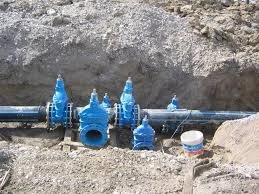Nov . 14, 2024 20:27 Back to list
plastic pipe fittings
Understanding Plastic Pipe Fittings A Comprehensive Guide
Plastic pipe fittings play a crucial role in various plumbing, irrigation, and construction projects. With their versatility, durability, and cost-effectiveness, they have become a popular choice in both residential and commercial applications. Made primarily from materials such as PVC (Polyvinyl Chloride), CPVC (Chlorinated Polyvinyl Chloride), and PEX (Cross-Linked Polyethylene), these fittings help connect pipes, direct flow, and ensure leak-free systems.
Advantages of Plastic Pipe Fittings
One of the most significant advantages of plastic pipe fittings is their resistance to corrosion. Unlike metal fittings, plastic does not rust or corrode over time, making it ideal for applications involving water transport. This resistance extends the lifespan of the plumbing systems, reducing maintenance costs.
Additionally, plastic fittings are lightweight, which makes them easier to handle and install. This factor can significantly reduce labor costs and time during installation. Moreover, plastic pipe fittings are commonly available in various sizes and shapes—be it elbows, tees, couplings, or valves—ensuring compatibility with numerous piping systems.
Applications
Plastic pipe fittings are widely used in a multitude of sectors. In households, they are often utilized in drainage systems, water supply lines, and irrigation setups. Industries such as agriculture benefit from these fittings as they facilitate efficient water distribution, enhancing crop irrigation while minimizing water wastage.
plastic pipe fittings

Furthermore, plastic pipe fittings are increasingly favored in the construction industry
. For instance, they are often used in HVAC systems, where they connect ducts, ensuring that air flows smoothly throughout buildings. Their resistance to chemicals also makes them suitable for various industrial applications, including chemical processing and waste management.Installation and Maintenance
When installing plastic pipe fittings, it’s essential to follow manufacturer guidelines. Proper techniques, such as solvent welding for PVC fittings or crimping for PEX, ensure secure connections and optimal performance. Regular maintenance is relatively simple, as any leaks or damages can often be remedied by replacing the affected fitting rather than the entire piping system.
Environmental Impact
Plastic pipe fittings also have a positive environmental impact. Many manufacturers focus on sustainability, producing fittings that reduce waste during production and installation. Once in use, these fittings contribute to water conservation efforts, particularly in irrigation systems designed to minimize runoff and evaporation.
Conclusion
In summary, plastic pipe fittings are indispensable components in modern plumbing and infrastructure. Their unique properties—corrosion resistance, lightweight nature, and flexibility—make them suitable for a wide range of applications. As the demand for efficient and sustainable plumbing solutions continues to grow, the role of plastic pipe fittings in our lives will only become more significant. Whether you are involved in a DIY project or working in a professional capacity, understanding plastic pipe fittings will enhance your approach to effective water management and construction practices.
-
Durable PP Rigid Sheet: Lightweight, Chemical Resistant Solutions
NewsAug.21,2025
-
PVC Grey Sheet for Extraction: Chemical Resistant & Durable
NewsAug.19,2025
-
Durable PVC Pipe Fittings for Plumbing & Irrigation Needs
NewsAug.18,2025
-
HDPE Steel Belt Reinforced Spiral Corrugated Pipe | High Strength
NewsAug.17,2025
-
HDPE Pipe Fittings: Durable, Leak-Proof Solutions
NewsAug.16,2025
-
Premium CPVC Sheet: High-Temp & Chemical Resistant Solutions
NewsAug.15,2025

